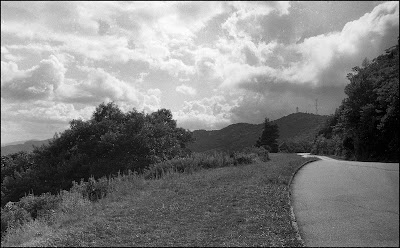The Pentacon F
The M-42 screw mount was adopted quite early as the means for attaching lenses to a single lens reflex camera with a focal plane shutter, as seen with the Contax S in 1949. Early examples of that camera have Zeiss Ikon on the prism front. Thus was the saga of Zeiss-Ikon in Stuttgart in Western Germany, and Zeiss-Ikon in Dresden, East Germany. By 1959, Zeiss-Ikon retained their name in Stuttgart, and the East German companies reorganized and became VEB Pentacon by 1964. We know them as just Pentacon, for the most part. Kamera Werkstatten (KW) was absorbed into VEB Pentacon, so the Praktica and Pentacon brands sort of intermingle, with each offering an M-42 mount SLR. However, let me make this point. While Zeiss-Ikon in Stuttgart was working on foisting the lens-shutter Contaflex SLR on photographers, the Contaflex was a dead-end, and very limited in lens choices. The Praktica and the Pentacon M-42 mount SLRs with focal plane shutters became the de-facto standard for 35mm SLRs, with subsequent manufacturers adopting the same lens mount for at least 20 years. Lens-shutter SLRs (and there were others besides the Contaflex, such as the Retina and Voigtlander Bessamatic) dropped by the wayside as SLRs with focal plane shutters became the standard into the digital era.
The Contax D and the Pentacon F are pretty much identical cameras. They feature the same interesting shutter speed dial on the top deck, front-mounted shutter release, shutter speeds up to 1/1000 sec, and a PC flash socket on the top deck.
They differ in the lenses that usually accompanied them. In the case of the Contax D, it would have been a Zeiss Jena 50mm Biotar, and the Pentacon would likely have had a Meyer Primotar or Tessar 50mm. Today, finding one with the original "kit lens" is difficult, because those lenses by themselves are often worth more than the camera body. In addition, the fact that there are an incredible number of M-42 lenses means that these cameras have probably passed through many hands by now, and often with a different lens than the one it originally came with.
Using the Pentacon F
I have a lot of experience with M-42 mount SLRs, and the Pentacon F is easy to operate. One thing that I had to do though, was find a proper take-up spool. The take-up spool in mine was missing - and I finally salvaged one from a broken Exa IIa. The Pentcon F was lacking the original lens, and I ended up using a much newer 28mm M-42 lens, as well as a Vivitar 35mm f/3.5 Preset T-mount with an M-42 adapter.
Features:
Non-automatic mirror return. That had to wait until Asahi Kokagu introduced it in 1954, and adopted later by other manufacturers. You need to wind the film to lower the mirror for the next shot. The camera uses a knurled film advance knob, not a wind lever.
Frame counter is on a ring below the advance knob.
Auto-diaphragm - the camera will allow you to use an automatic aperture lens, that stops down at the moment of the shutter release. You can also use pre-set lenses. For more information on those, see this post.
No light meter
No hot shoe, but PC flash port on top deck
Self-timer (even the Pentax K1000 does not have one)
Front mounted, angled shutter release with cable release threads
B, 1-1/1000 sec focal plane shutter. You set the shutter speed by pushing down on the kurled knob just below the window and turn the knob clockwise to get the desired shutter speed to show up on the dial. Pretty nifty. There is a sliding switch on the back of the camera that determines which shutter speeds you select. There are slow shutter speeds in red, and faster speeds in black on the dial. Pushing the switch to the left gives you a red arrow on the left of the speed dial to align the slow speeds with, and pushing the switch to the right gives you a black indicator arrow on the right side of the dial for faster shutter speed selection.
Film rewind knob, no pop-out wind lever.
Flash Sync speed - I don't know. There is no symbol to indicate the sync speed, nor is there a choice of X or FP sync, but some research indicates that it is a slow 1/10 sec.
There is a film release button for rewinding the film and a tripod socket on the bottom.
There is a funny little flip-out bracket beneath the lens mount to keep the camera level on a table if you are doing selfies, I guess.
I loaded the Pentacon F with a roll of expired Polypan-F film, and used a hand-held meter as well as sunny-16 while I was shooting with it. Overall, the camera performed perfectly, and my images were par for the course for a film like Polypan-F.
Scanned on my Epson V700 Photo flat-bed scanner.










No comments:
Post a Comment